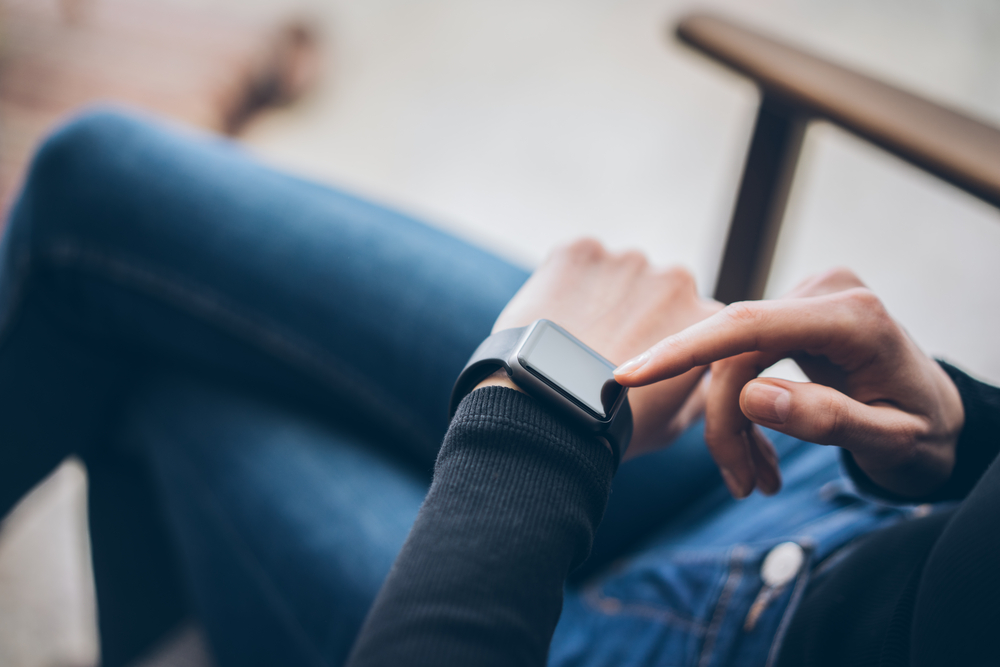PKG Wearable Device Objectively Detects Motor Fluctuations, Dyskinesia, Study Shows

A wearable motion-tracking device called Personal KinetiGraph (PKG) objectively and effectively assesses Parkinson’s-related motor fluctuations, researchers report.
The study, “The role of Personal KinetiGraphTM fluctuator score in quantifying the progression of motor fluctuations in Parkinson’s disease,” was published in Functional Neurology.
The PKG system, developed by Global Kinetics Corporation, is a wrist-worn movement recording device. It collects data on a person’s motor symptoms, including tremors, slowness of movement (bradykinesia), and abnormal involuntary movements (dyskinesia).
The technology also assesses patients’ motor fluctuations, immobility, and daytime somnolence, or sleepiness. Clinicians also can use it to help study an individual’s likelihood for developing impulsive behaviors, and to collect information on medication compliance.
The device has been cleared by the U.S. Food and Drug Administration, and holds CE certification, meaning it meets EU safety, health, and environmental protection requirements.
Previous studies have shown that PKG is able to distinguish between patients with and without motor fluctuations. Now, investigators at the Cedar-Sinai Medical Center in Los Angeles set up to determine whether the cut-offs of PKG motor fluctuation scores could define the progression of Parkinson’s fluctuation stages.
A total 54 Parkinson’s patients — 37 men and 17 women, mean age of 68 years — used the PKG device for 6 days. The participants then were asked to complete a 2-day standardized motor diary, essentially a journal in which the individuals would self-report and record their motor symptoms.
By applying clinically validated scales and questionnaires, researchers were able to categorize the participants into four groups: non-fluctuators (14 people), or patients without motor fluctuations; early (15 people); moderate (15 people); and troublesome fluctuators (10 people), or individuals with motor fluctuations due to a decline in the usual benefit of levodopa therapy.
Of the 54 individuals who completed the PKG trial, only 39 completed and delivered valid motor diaries. Compliance with the motor diary improved with decreasing severity of motor fluctuations — meaning that patients with less severe fluctuations were more likely to complete the diary.
PKG data revealed the device’s fluctuation scores significantly differentiated early fluctuators and troublesome fluctuators, as well as dyskinetic and non-dyskinetic patients.
Meanwhile, patient-reported motor diaries could not distinguish the four study groups based on the average “off” time, the researchers said.
Dopaminergic medications enable Parkinson’s motor symptom control — meaning that treatment temporarily stops the symptoms. However, as the disease progresses, patients typically need to gradually increase the treatment dose to get the maximum benefit. Even after that, however, they may still experience the reappearance or worsening of symptoms — known as “off periods” — due to the diminishing effects of the therapy.
Average time with dyskinesia, or abnormal involuntary movements, distinguished the non-fluctuators and moderate fluctuators. Importantly, the PKG system identified high dyskinesia scores in patients who denied having it.
“Motor fluctuations, including ‘wearing-off’ and dyskinesia, are associated with increased disease severity and disability, and PD [Parkinson’s disease] patients experience decreased quality of life as their response to medical therapy becomes less predictable,” Echo E. Tan, MD, neurologist at Cedar-Sinai Medical Center and the study’s lead author, said in a press release.
“Effectively managing motor fluctuations is complicated by the lack of objective assessment tools, leading patients and physicians to rely on direct observation in the clinic or patient reports, which may be unrevealing, incomplete and unreliable,” Tan added.
The researchers noted that “wearable devices transcend language barriers, cognitive barriers, as well as time constraints in the clinic.” That makes this wearable device a useful tool to objectively measure motor fluctuations in Parkinson’s disease.
“The results of our study demonstrate that the fluctuation score calculated by the PKG system provides objective quantification of motor fluctuations. This may help improve routine management of PD [Parkinson’s disease] patients and enable more objective assessments in clinical trials of PD [Parkinson’s disease] therapies,” Tan concluded.






